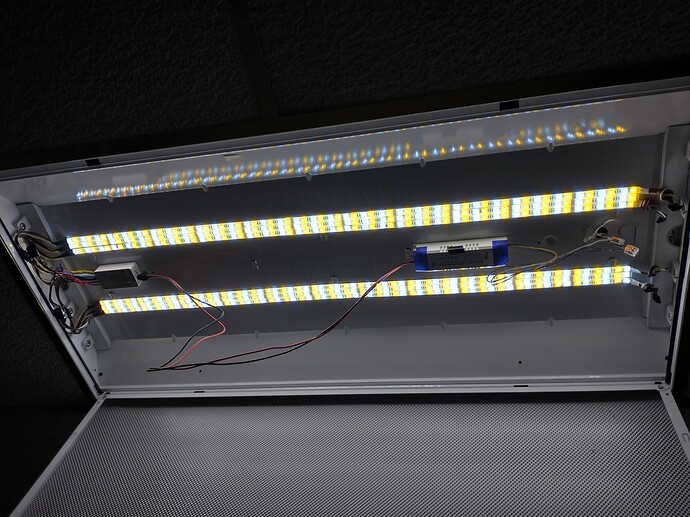Waiting on my shipment of Blue 2-1’s. We’re moving and instead of taking all my z-wave switches from the old house, I’m going to use the Blues because of their ability to directly control zigbee lights without a hub. The new house has a lot of recessed can lights which I will be retrofitting with zigbee lights, probably Hues depite their high cost.
It’s an absolute necessity for me that fundamental things like lights work without a hub, in case the hub (Hubitat) malfunctions or I suffer an early demise.
I want to be able to do the same with led strip lights that will replace some recessed flourescent fixtures in our kitchen and bathroom. Anyone have experience with a Zigbee RGBW strip controller which can be directly associated with an Inovelli Blue?
1 Like
I figured I’d join up since I have RGBCCT Led strips set up in my old florescent fixtures. They are controlled by some Gledopto ZigBee 3.0 controllers. I was able to bind the switch to my led strip lights just fine. I had no trouble setting it up with Home Assistant and ZHA.
Anecdotally, you may need to have a neutral wire for your switches. I didn’t have much luck getting a switch to work in my one non-neutral led strip fixture, even with 2 bypasses connected. That’s just personal experience, though. I’m not sure if the led drivers I have don’t play well with non-neutral mode, or that fixture just has weird wiring.
1 Like
Thanks! Looks like there’s a neutral in every switch box (so far).
What kind of flourescent lights did they replace and what strips did you use?
The two fixtures above our kitchen sink have two T8 48" bulbs each. I’m wondering whether one led strip will provide more or less equilvalent light.
While I haven’t tested it specifically, I’m confident the Hue light strips will work as all other products I’ve tested from them (outdoor pathway lights, A19, BR30, candelabras and recessed lights) work perfectly.
Other brands that I’ve tested are Osram Lightify and Innr. It looks like they both have light strips.
If you have any under-cabinet lights, I highly suggest the Lightify ones – they’re relatively inexpensive but work really well with bindings:
Yeah, my situation involved retrofitting office style troffers, so those options may be easier for OP’s case than what I did. I don’t remember if they were specifically T8’s, but the troffers are 48 inches long.
If OP wants to go the custom route, here’s what I used:
- GIDERWEL RGBWW LED Strips: https://www.amazon.com/gp/product/B07JKNFMC3/ref=ppx_yo_dt_b_asin_title_o00_s00?ie=UTF8&th=1
- GLEDOPTO Zigbee 3.0 RGBCCT LED Strip Controller: https://www.amazon.com/gp/product/B08KDL8MHX/ref=ppx_yo_dt_b_asin_title_o06_s01?ie=UTF8&th=1
- You may want to double check if this will work with Hubitat. I don’t see any reason why it wouldn’t, but it never hurts to be cautious.
- Your choice of 12 volt power supply with the appropriate wattage for your light strips. The ones I got originally make noise when the LEDs are off, and the replacements I bought for those are no longer listed on Amazon, so no link here.
- 6 pin JST connectors (if you’re not afraid of soldering).
- Alternatively, there’s solderless 6 pin connectors out there. I’d pay close attention to the reviews, because some of the options out there don’t make good contact with the strip.
- I also recommend getting some clear mounting tape for the LEDs, because the adhesive that comes with LED strips doesn’t seem to hold well on metal / paint.
- You may also want some regular double sided adhesive from the hardware store to keep the driver and controller from falling loose.
This would definitely be a weekend project should you want to try it. For me, I found that three ~42 inch strips gave off a similar amount of light to a florescent bulb. Your results may be different depending on the LED density of the strips you choose. Basically, the closer together the LEDs are, the brighter it’ll be.
I’ll leave things off with some pictures of the final result. The first one shows the driver and controller, the second with the shroud put back in:

